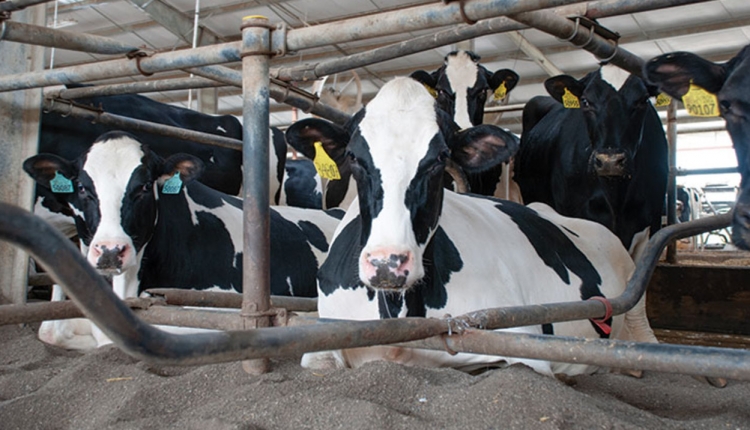The authors are a professor emeritus in the College of Veterinary Medicine and an associate professor in the department of animal science at Michigan State University, respectively.

Decades ago, over 20 nations eradicated bovine leukemia virus (BLV) from their dairy herds by culling all cattle found positive on a BLV antibody test. These nations remain negative today as documented with regular bulk tank screening and follow-up testing. This method of culling all antibody positive cattle would be too costly for most U.S. dairy farms because almost half of our milking cows are positive, as are about a third of our heifers.
It has recently been found that a small percentage of infected cows are responsible for most transmission to herd mates. These highly infectious cows are often called “super-shedders” because they can shed many hundreds of times more BLV than lowly infected cows.
To detect the level of shedding, a quantitative polymerase chain reaction (qPCR) diagnostic test was recently developed that measures each cow’s proviral load (PVL). The PVL is the number of BLV provirus infectious agents per volume of blood. In one particular Midwest herd of 199 lactating cows, it was estimated that 22 (11%) were responsible for 64% of the virus being shed on the farm. Several field studies have shown that targeted culling of these high PVL cattle reduces the herd’s BLV prevalence over the course of a few years, sometimes to the point of total BLV elimination.
PVL is also highly correlated with the cow’s level of immune suppression, lost milk production, and longevity in the herd, so these high PVL cows probably never had a long future in the herd anyhow. The rapid removal of high PVL cows is a critical control point for reducing the rate of new BLV infections and is much less costly than the previous method of simultaneously culling all antibody positive cattle.
Another new development is the recent recognition of a strong genetic predisposition for some cows to develop a high PVL. Hopefully the bull breeding firms will soon start offering sires that produce daughters that maintain low PVL measures throughout their lives.
A new field study of eight organic farms began in the summer and fall of 2024. It’s a demonstration project to see how easily and inexpensively these farms can reduce or eliminate BLV. These farms will test all cows annually for enzyme-linked immunosorbent assay (ELISA) antibodies, and then the ELISA-positive cows will be further tested to determine their PVL. High PVL cows will be prioritized for culling, or at least temporarily segregated until culling is economically possible. Other medical hygiene methods to prevent BLV transmission will also be utilized. Some cows with exceptionally high PVL values will be genetically tested to determine if they have one of the genotypes associated with high PVL. If so, herd managers may not want to keep heifer calves from such cows.
Organic Valley Cooperative is working with Michigan State University on this project to evaluate the feasibility of controlling BLV in their member herds. Periodic updates on this project will be posted on the Michigan State University BLV website (canr.msu.edu/blv/), which has information regarding most aspects of this disease.
Why bother controlling BLV?
Most dairy producers know about the occasional cases of BLV-induced lymphoma (lymphosarcoma), which is now the most common reason for U.S. cattle being condemned. However, in the last decade it has become apparent that BLV’s immune disruption causes an even greater economic impact by compromising the cow’s immune defenses. Like its biologic retroviral cousin HIV/AIDS in humans, BLV immune disfunction reduces resistance to a multitude of common pathogens and conditions. In cattle, BLV results in reduced milk production and a shortened cow lifespan in the herd. Additionally, worries about possible public health and animal welfare issues undermine consumer confidence in dairy products.
Traditionally, BLV has been controlled by culling all infected cattle detected by an antibody test. In the 1970s, our U.S. BLV prevalence was about 10%. Now almost 50% of our dairy cows are infected. Few producers could economically survive culling such a large percentage of their cows. Fortunately, the qPCR test that is now available enables a more efficient way to control BLV. This test can identify the cows with high PVL levels that are responsible for most of the transmission. Removing these high PVL cows can greatly reduce the rate of new infections and, over the course of a few years, reduce BLV prevalence to where eradication from the herd is economically possible.










